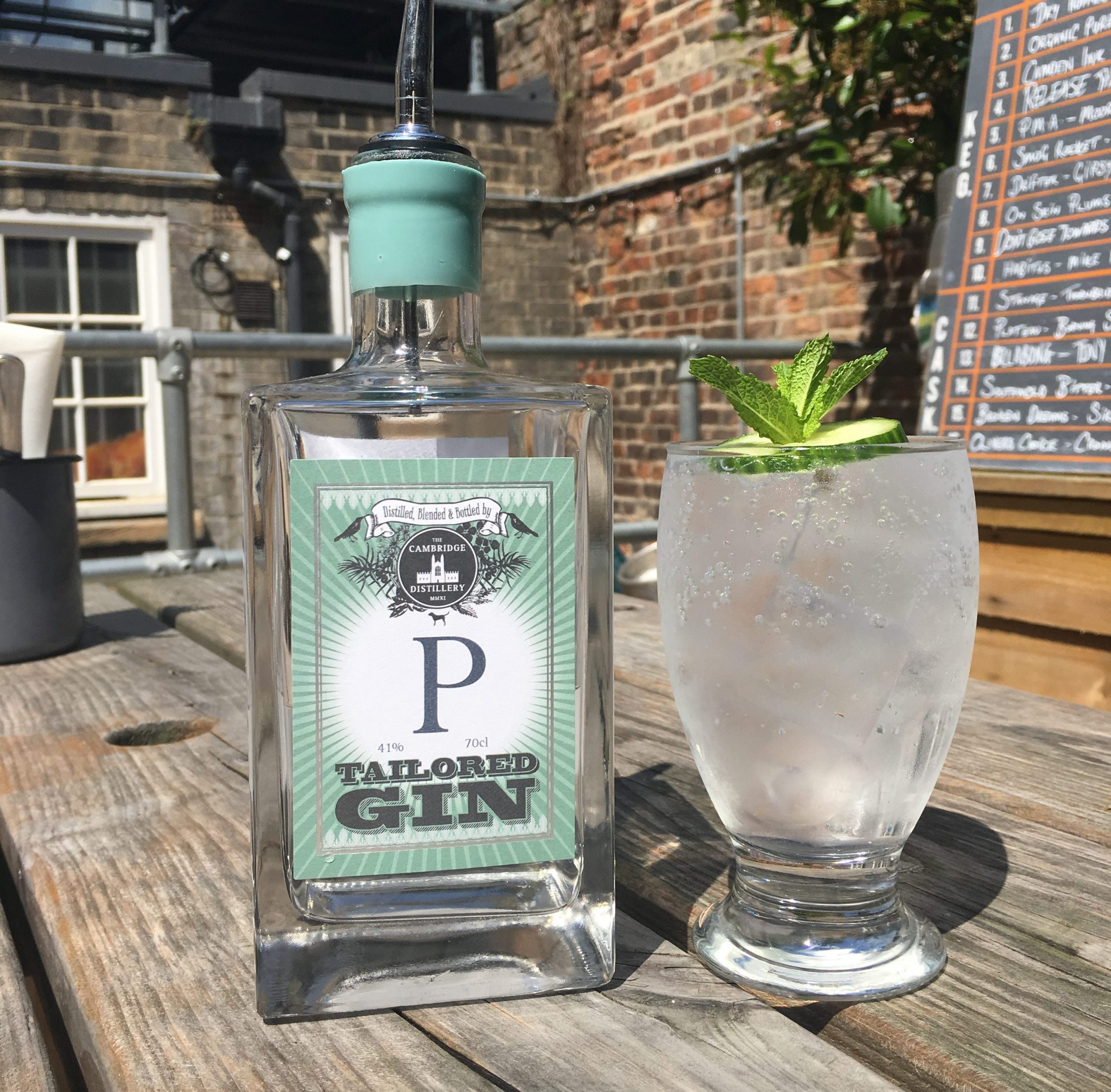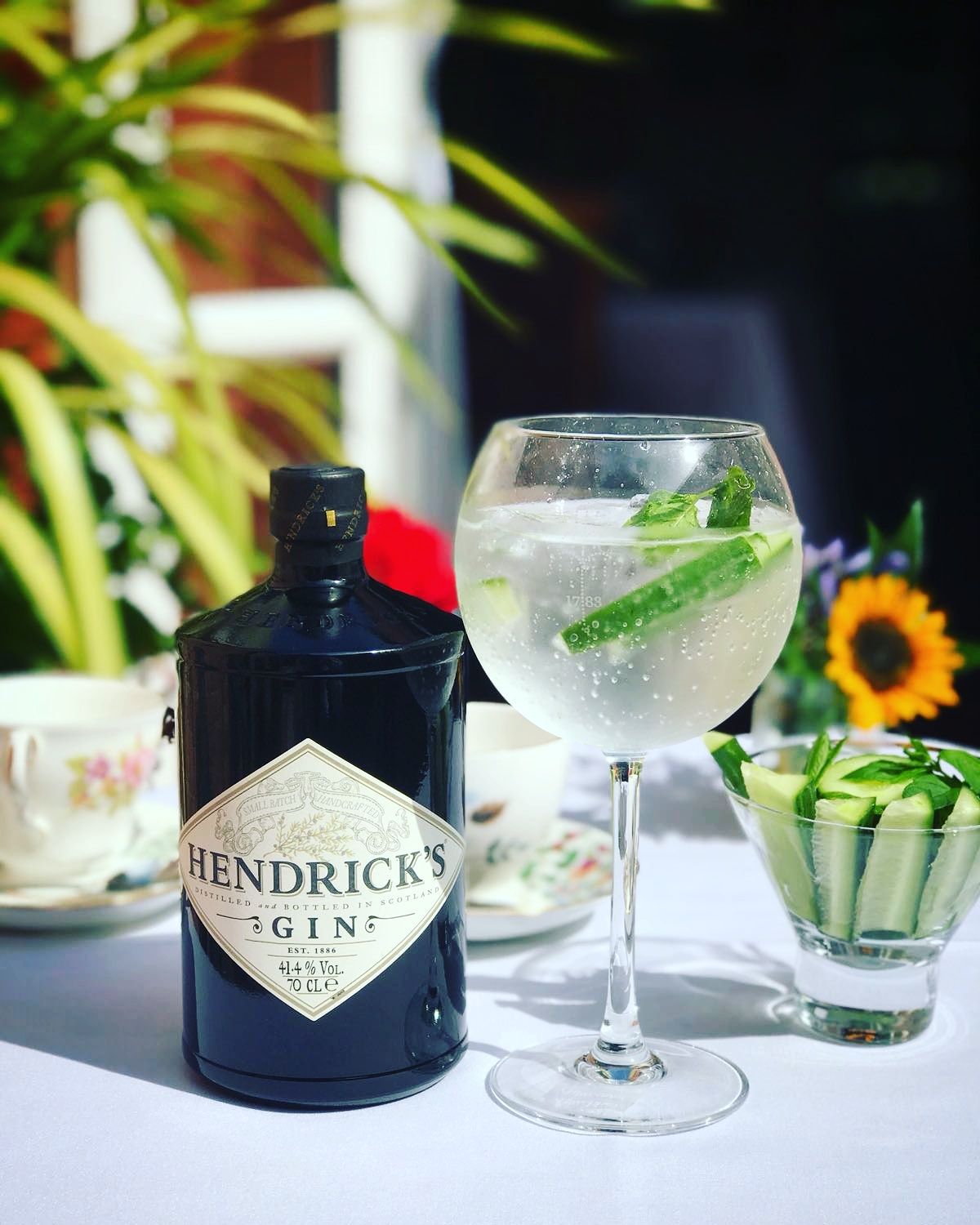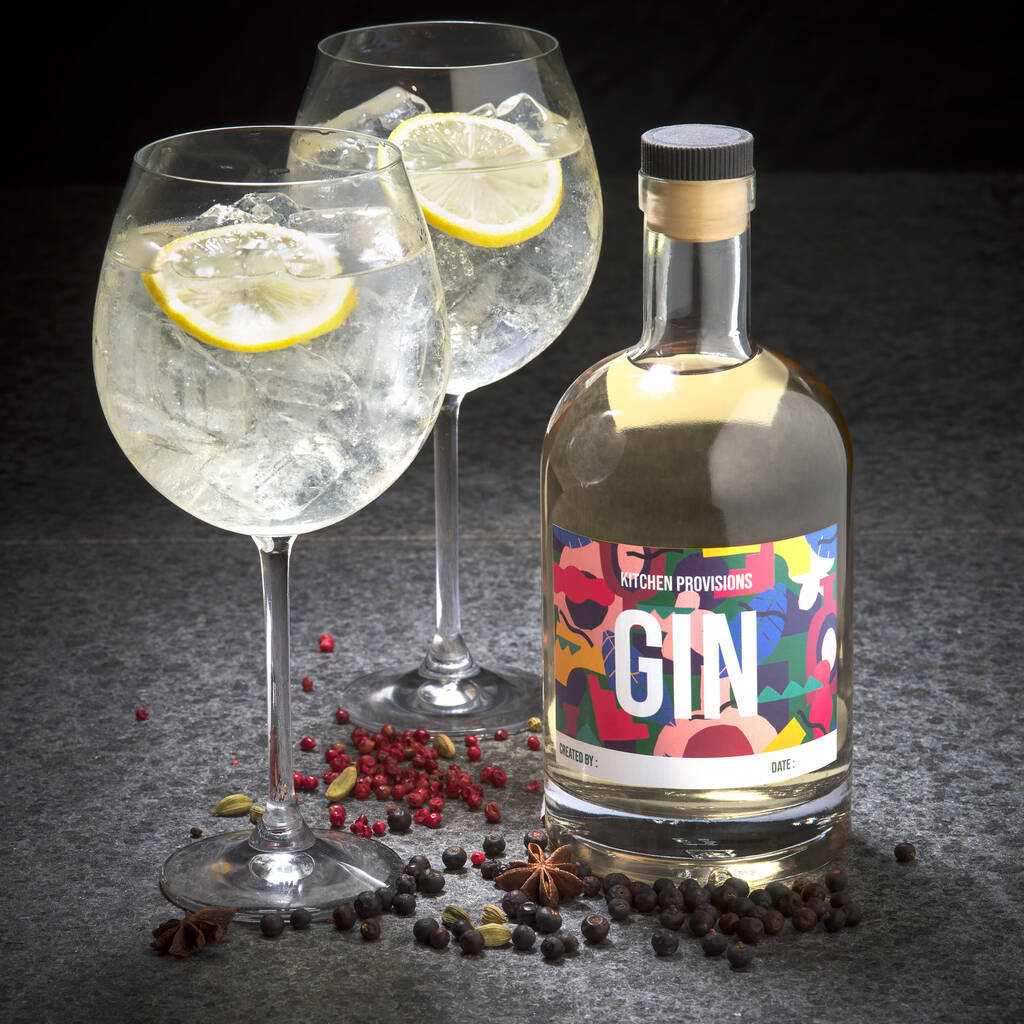Gins Where Liquorice Is Noticeable To Taste:
City of Londons Christopher Wren Gin has liquorice root by the bucketload. Made in partnership with Tom Nichol, the gin uses just five botanicals but is given an incredible depth of flavour and length of finish by the root.
Tanqueray Malacca shares a very similar DNA to Christopher Wren and takes its smoothness from thick, oily liquorice root. Strathearn Heather Rose Gin also makes good use of the root it provides the spirit with a lovely, earthy sweetness entirely reminiscent of old school sweet shop liquorice sticks.
Gins Where Orris Root Is Noticeable To Taste:
Orris is a little shy in gin as it is often used in very small doses. Furthermore, much like juniper, angelica and coriander, it is used so widely in the spirit that it can be hard to pick just one out. It shares strong similarities with angelica, which is also used as a binding agent.
Plymouth Gin has a notable orris presence, so too does Victory Gin and the Devon violets within Tarquins Dry Gin combine well with orris to give an overall floral note to the gin.
Birth Of The Distilled Grain Spirit
What is gin made from? Making gin is a bit like creating a watercolour painting you need a good quality blank canvas to start, and thats where a distilled grain spirit comes in. At Manly Spirits, we use an Australian wheat based spirit, which is sourced from our local Australian wheat farmers.
If youve been on one of our distillery tours, youll know that we also produce another type of grain spirit for our whisky, which is made from Australian barley. Unlike Gin which can be bottled after distillation, Whisky requires maturation time in the barrel which can take several years to mature. So while our craft spirit range at the moment consists of mostly gin, botanical vodkas and liqueurs its interesting to know that currently a large portion of our production is actually making barley newmake spirit for our whisky.
Don’t Miss: What Drinks Can I Make With Dark Rum
So What Exactly Is Flavoured Gin
Flavoured gin is a term that has sprung up in recent years thanks to the unprecedented boom in modern spirits that are pushing the boundaries of the traditional definition of gin, by adding new aromatics and flavours to the distilled liquid.
The alcohol content and production process are similar to those of traditional gin, but the long-established, common botanicals are taking more of a back seat to stronger flavours of fruits, spices and berries such as clementine, plum, strawberry and blood orange.
Flavoured gin, including many brands of pink gin, puts more of an emphasis on fruit and spice flavours over traditional botanicals
Many of these delicious new styles of gin, such as Whitley Neils Rhubarb and Ginger Gin , Manchester Raspberry Gin and Warner Edwards Honeybee Gin have drawn high acclaim from the industry and public alike, and are helping to change the ginny landscape across the UK for the future!
Where some confusion arises is around products appearing to present themselves as flavoured gin, when in fact, due to their high sugar content, low alcoholic volume and lack of predominantly juniper flavour, they in fact qualify as gin liqueurs, or something else entirely!
How Is Modern Gin Different To Traditional Types

Some new types of gin dont fit into the traditional categories
This term encompasses anything that doesnt fit into other neatly outlined categories and gives distillers lots of room to manoeuvre.
While there are no quality guarantees with modern gins, this category is where some true visionaries are playing and they have a whole world of flavour at their fingertips!
Read Also: Where To Buy Kah Tequila
What Is Gin Made Of
If you ever wondered what gin is made from, it usually starts as an unmalted cereal-based ethanol extracted via distillation similar to Russian vodka. However, it will go through another distillation process in order to attain its distinctive flavour.
All gin is actually re-distilled and it may even undergo this process twice or three times on some occasions. During the re-distillation, the ethanol is exposed to a specially selected assortment of herbs and spices that will impart their flavours.
Referred to as botanicals, they come into contact with the alcohol in a number of different ways.
However, the main botanical ingredient used is juniper while coriander is equally as common. Furthermore, gin may feature other ingredients including cubeb berries, yarrow, caraway seeds, orris root, angelica root, citrus peel, and elderflower.
Gin : What Is Gin & How Is Gin Made
You might have noticed that gin has become increasingly popular in Australia in recent years, but its not just a matter of being on-trend. The Australian craft distilling industry really only started in the last 30 years, with new laws allowing small-scale distilling coming into place in the 90s, led by Bill Lark . This gave the opportunity for small distilleries to open up, just like us in 2016, and since then has grown to over 300 distilleries in Australia. The combination of this, with our rich Australian botanical pantry has allowed us and our fellow Aussies to experiment and push the boundaries of what has always been known as gin, incorporating weird and wonderful natives botanicals to establish a truly special Australian gin.
Were lucky, in Australia, to have such an interesting botanical pantry to choose from, and they really make our Australian spirits stand out when you put them up against the international brands. Says our Co-Founder, Vanessa Wilton. The first time we won Best London Dry Gin at the World Gin Awards, we knew we were doing something right.
Recommended Reading: Hotels Near Papas And Beer Rosarito
What Exactly Is Gin
You might be surprised to discover that there are quite tight laws that control not only what gin is made of, but also how it is made and even what it tastes like!
Tight laws control what spirits are allowed to call themselves gin
Heres what the current legal definition of gin in the E.U. states – globally, the definitions are also very similar:
-
Gin must be a neutral spirit distilled from something natural like wheat, barley, potatoes or grapes.
-
The flavours of a gin come from its botanicals , and, crucially, all gins must contain juniper in fact, the predominant flavour must beof juniper, otherwise the drink cant be defined as gin, by law.
-
There must be at least 37.5% of pure alcohol in the total volume of liquid .
-
Within the overarching category, there are three traditional types of gin: London Dry, Plymouth Gin, and Old Tom gin – see below for the differences between each of these. However, some modern, innovative gins no longer fall into any of these categories!
-
Flavoured gin, gin liqueurs and sloe gin are all different from traditional gin in a few significant ways – see below for more details about this!
Theres a lot of debate in the drinks industry right now around the legal definition of gin and whether it is too loose or too restrictive. Strong opinions abound on both sides of the argument as to how or whether innovative new products should or shouldnt be allowed to call themselves gin. More on this topic later!
A Short History Of Gin And Its Country Of Origin
Theres evidence gin or a variation of what we drink today at least was around as early as 70AD. Greek physician Pedanius Dioscorides used a mixture of juniper and wine as a remedy for the sniffles! Weve also heard tales of Italian monks who drank a juniper based liquid similar to gin. Whether that was for utility or leisure, well probably never know.
The gin we drink today with tonic first appeared in the form of a Dutch spirit called jenever. Named after the French word for juniper, this rather crude distillate was used as a medicinal drink. It was later adopted by the English, who sipped gin before going into battle in the Eighty Years War and so the term Dutch courage was born!
Gin became increasingly popular here in the UK as the gin craze swept society giving rise to the dubious nickname Mothers Ruin.
The Old Tom style gin was predominant in the 18th Century. This sweeter type of gin was created when gin makers would add sweeteners to disguise the taste of cheap and nasty spirits.
The fashionable gin and tonic cocktail later made its way to the US, where Prohibition only served to increase its popularity. And the rest, as they say, is history.
Also Check: Where To Buy Bulleit Whiskey
How Is Gin Made
Gin is often distilled in copper alembic stills
Gin is usually made from a base of grain, such as wheat or barley, which is first fermented and then distilled.
Juniper berries and other herbs, plants and spices – known as aromatics, or botanicals – are added to the fermented grain mixture along with water until the alcohol level and balance of flavours meets the required levels.
There are several different technical methods of production that distillers use to make gin
Compound gin is made from a simpler process: fruits, herbs, vegetables or spices are added to a neutral base spirit and left to infuse with the flavours.
Its easy to make your own, delicious compound gin at home – heres how!
Identification Of Key Gin Aroma Compounds
Pierre Dussort, … Jean-Luc Le Quéré, in, 2014
Potential impact aroma compounds of gin have been identified using Gas Chromatogry Olfactometry Mass-Spectrometry . In order to select some of them for a recombination study, we developed a specific procedure. Instead of only choosing the compounds on criteria such as their odor quality or their odor activity values, we also used physico-chemical parameters and information on their botanical origin. Data were organized in blocks homogeneous in terms of parameter type. Different statistical treatments were used in order to classify the compounds either by analyzing the parameters altogether or separately block by block.
G.H. Palmer, in, 2016
Recommended Reading: What Mixes Well With Malibu Coconut Rum
How To Make Gin At Home In 7 Easy Steps
Many bartenders and master distillers love gin due to is its versatility as a spirit. Believe it or not, you can make a batch of aromatic gin at home, without high-tech equipment or a chemistry degree.
Whipping up a bit of your own homemade gin can be really fun. Want to make your own gin at home?
Try our easy compound gin recipe and add a bottle to your drinks cabinet. Once youve learned how to make gin, you can move on to mixing your own gin cocktails!
Gins Where Lemon Is Noticeable To Taste:

Bluecoat American Gin has a prominent limonene note throughout, while Leopolds Gin and 6 OClock Gin have lemon leaning profiles. Italian gin Malfy is a borderline-obsessive love letter to the fruit. Literally, the kind a Stan might write before being handed a restraining order
Fans with a budget to match their lemon hankering may be able to find some vintage bottles of Gordons Lemon Gin or Plymouth Lemon Gin, which are still around.
Recommended Reading: How Many Carbs In Captain Morgan Spiced Rum
The Above Two Methods Can Also Be Combined
While some botanicals are steeped, others will be placed at the top of the still to infuse the vapors. One famous example of this is Hendricks Gin, which uses two separate stills and then combines the distillates for the final blend, along with the addition of its well-recognized cucumber and rose petal essence.
What Is Gin Made Out Of
Gin in its most basic form is actually pretty straightforward. Its simply a neutral spirit as the base which is then flavored with botanicals.
Botanicals are any plant material used as a way to add flavor they release their flavors upon infusing them into the raw spirit.
You can say its pretty much like special flavored vodka. When you say gin, it means that juniper berries are the most dominant among the botanicals, and it is at least 37.5% alcohol by volume .
Most industrial and commercial gin makers extract the flavors from botanicals via a distillation process.
However, it is possible to make gin simply by steeping plants, herbs, or spices in the base spirit.
Yes, you can very much make your own gin at home using vodka. Its easy! Just like making vodka at home.
Beyond the vodka and the juniper berries, you can feel free to experiment with whatevers in your spice cabinet, fruit you like, plus botanicals from your herb garden.
Some of the most commonly used gin botanicals are coriander seeds, angelica root, citrus peel, and cinnamon. But this is just to list a few! Again, feel free to include any spices and herbs.
Maybe you can try bay leaves, rosemary, licorice powder, lavender, cardamom, cumin, fennel seeds, or lemongrass. If youre not sure where to start, check whats in your favorite commercial gins and use those for inspiration.
Read Also: What Can I Mix With White Rum
Gins In Which Elderflower Is Noticeable To Taste:
Warner’s have an elderflower infused gin, while their Dry gins also make good use of it to add a floral touch to the nose. Shortcross Gin use the flower to add a levity in their gin. Hendricks Gin makes good use of the soft sent elderflower brings the mix, although the rose and cucumber dominate so its not easy to discern it as an individual botanical.
Silent Pool makes fantastic use of the flowers, where it is particularly apparent on the nose, adding an inviting bouquet to their gin.
‘vapour Infusion Method Of Gin Distillation
With this method, the mix of juniper and botanicals do not come into contact with liquid spirit at all. Instead, they are placed in baskets inside modified stills and only encounter the spirit as vapour. The botanical-infused vapour then condenses into a botanical-infused spirit and water is added to reduce to bottling strength.
The two methods above may be combined with some distillers using a combination of steep & boil and vapour infusion. In this case some botanicals will be steeped in the boil pot with the same still also having a chamber to hold the botanicals, through which the botanical infused vapour from the boil pot will pass. There are other variables a distiller may employ as follows.
Don’t Miss: Is There Sugar In Gin
Is There More Sugar In Gin Than White Wine
In white wine is carbohydrates than in gin. There is 0g/100g of carbohydrates in gin and 2.6g/100g in white wine so let me do the math for you again difference is about 0 %. Where is more fats? In white wine is fats than in gin. Tables below show us that there is 0g/100g of fats in gin and 0g/100g in white wine.
Why Has Gin Become So Popular Again
Gin is a special, storied spirit with a rich, but often dark history. Tales of unchecked popularity & deadly indulgence belie a sophisticated & versatile spirit with widespread appeal.
Due to the huge numbers of combinations of aromatic ingredients that can be used alongside juniper as a flavouring, gin is one of the most diverse categories of spirits.
Is gin a fad? Perhaps like all fashions gins popularity will continue to be cyclical, but with better controls in place to tax consumption & ensure safe production the unique qualities of gin can shine through. The high purity of the base spirit means almost all the flavour comes from the botanicals & the herb-bills used. Leaving distillers free to create limited only by their imaginations. In turn this provides endless inspiration for bartenders to create cocktails and for consumers to enjoy a huge variety of choice & discover new flavours.
Is gin the healthiest alcohol? Whilst no alcohol is healthy in excess, gin like vodka, is amongst the driest & cleanest of spirits containing much less of the higher alcohols or congeners present in spirits like dark rum, whisky or brandy that can contribute to feeling hungover .
Despite often being made from fermented grains or sugars gin & vodka are naturally free from any sugar or gluten , unless added after distillation.
Also Check: How To Make Whiskey At Home
Gin Botanicals: What Is Gin Made From
In this article, we explain what gin is made from, how its made and look at some of the different gin botanicals that are used to flavour gin today.
If you think the current popularity of gin is a new phenomenon, think again. Gin has been around for a very long time indeed. It first appeared as herbal medicine in the 16th century, helping to treat gallstones, gout and stomach issues. But it was when William of Orange became king that the juniper based spirit became fashionable as a drink with the British people.
There is no doubt that gin is the most diverse spirit on the market. Due to the numerous combinations of botanicals used in gin production, there is an extraordinary range available today. Thanks to these botanicals and present-day distilling processes, modern gins are significantly different from the gin drunk those hundreds of years ago.
The Distiller Plays A Key Role

Its the job of a distiller to ensure that the botanicals used in a Gin are treated in a way which results in the same flavored end product, despite, for example, using different crops of berries, seeds and herbs over the course of a brands lifetime.Variances in a single batch of juniper berries will occur naturally, so its up to the distiller to taste a number of samples from each botanical crop in order to ensure consistency in flavor.
Recommended Reading: What Do You Mix With Vanilla Vodka